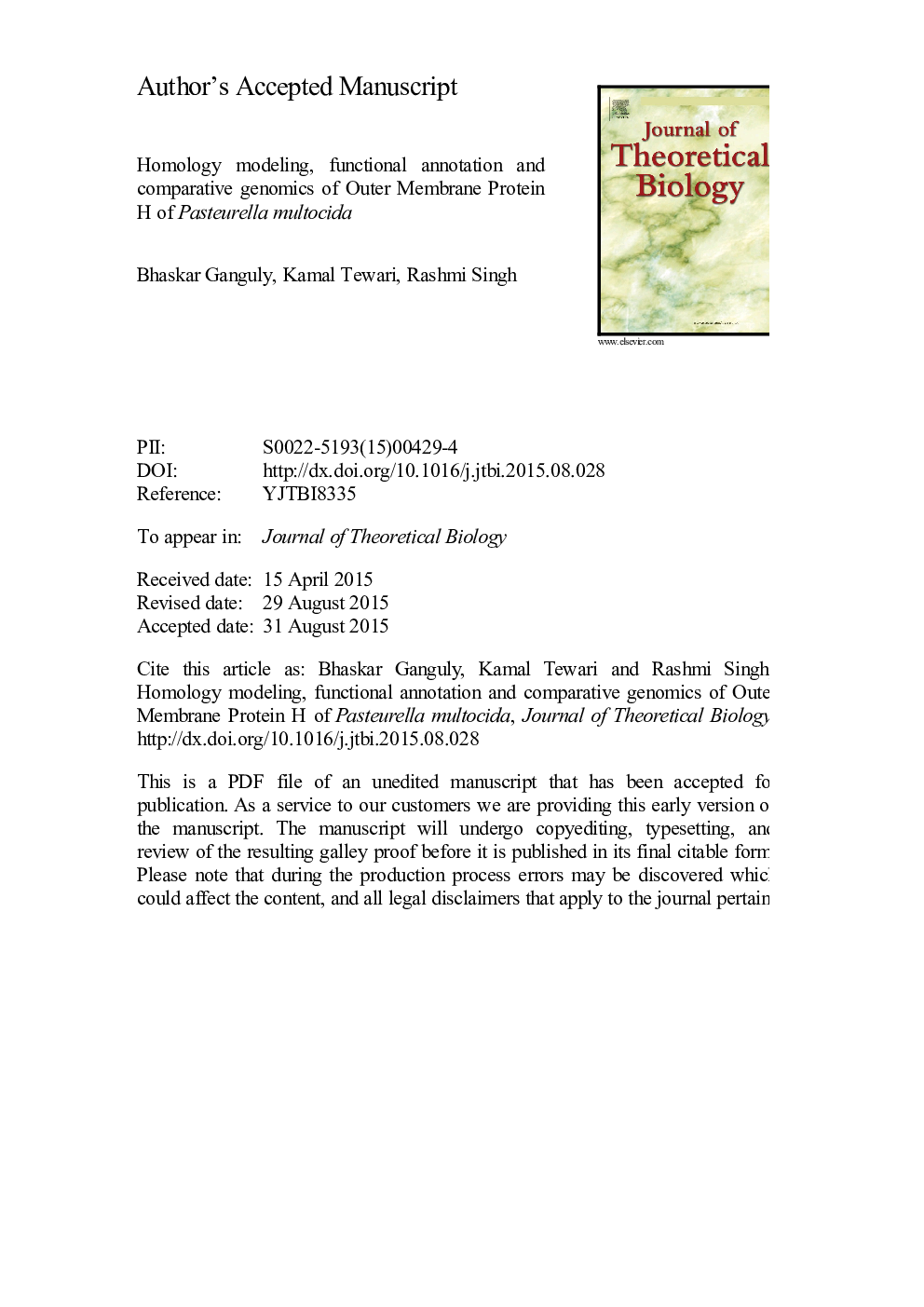| Article ID | Journal | Published Year | Pages | File Type |
|---|---|---|---|---|
| 6369417 | Journal of Theoretical Biology | 2015 | 29 Pages |
Abstract
Pasteurella multocida is an important pathogen of animals and humans. Outer Membrane Protein (Omp) H is a major conserved protein in the envelope of P. multocida and has been commonly targeted as a protective antigen. However, not much is known about its structure and function due to the difficulties that are typically associated with obtaining sufficient amounts of purified prokaryotic transmembrane proteins. The present work is aimed at studying the OmpH using an in silico approach and consolidate the findings in light of existing experimental evidences. Our study describes the first 3D model of the P. multocida OmpH obtained through a combination of several in silico modeling approaches. From our results, OmpH of P. multocida could be classified as a homotrimeric, 16 stranded, β-barrel porin involved in the non-specific transport of small, hydrophilic molecules, serving essential osmoregulatory function. Moreover, very small homologous sequences could be identified in the host proteome, strengthening the probability of a successful OmpH-based vaccine against the pathogen with remote chances of cross-reaction to host proteins.
Keywords
SDSOMPkiloDaltonkDaKEGG Automatic Annotation ServerPasteurella multocidaPDBRMSDNCBICDDPSI-BLASTBLAST, basic local alignment search toolblastpBlastgrand average of hydropathyKAASAnnotationdaltonthree dimensionalDEGHomology modelingNational Center for Biotechnology Informationroot mean square deviationIsoelectric pointGene ontologyDatabase of Essential GenesProtein Data BankOuter membrane proteinPorinGRAVY
Related Topics
Life Sciences
Agricultural and Biological Sciences
Agricultural and Biological Sciences (General)
Authors
Bhaskar Ganguly, Kamal Tewari, Rashmi Singh,
